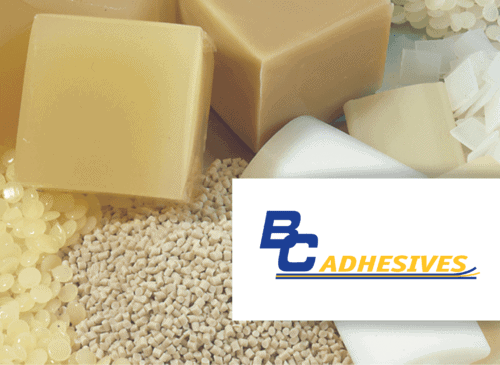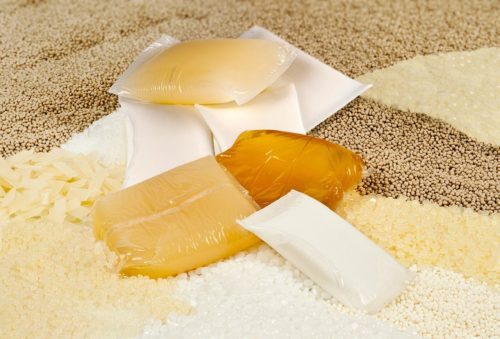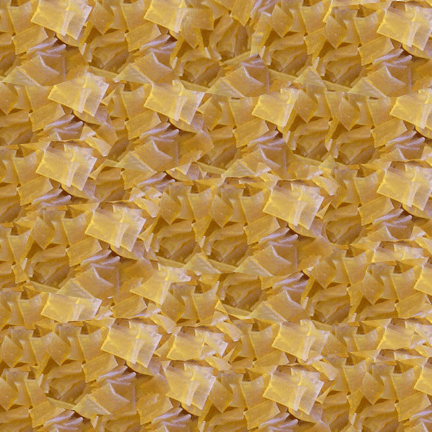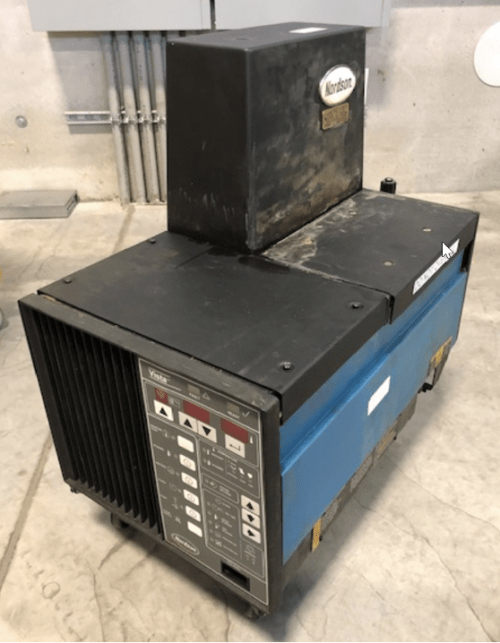The History of Hot Melt Adhesive
The history of hot melt adhesive goes back to 1940 when Procter & Gamble, Paul Cope invented the thermoplastic glue as an improvement of water-based adhesives that were failing humid climates. This changed the direction the industry was going. You can now use 100% solid, non-toxic adhesives containing no solvents or water, to provide permanent bonding to a wide range of materials. In the past glue was used for a few applications, but now with the introduction of hot melt adhesive, it now is used in almost every industry in some way, shape, or form. If you think about it, adhesives are essential for most businesses to even function, as there isn’t really an alternative to them. A simple way to learn the functionality of how hot melt adhesives work, check out this video “How Do Hot Melt Adhesives Work”

Hot Melt For Packaging & Assembly
The packaging industry has always dominated the hot melt adhesive usage. Back in the day there were many ways hot melt adhesives were applied. This made it confusing for users to figure out what equipment they should be using. It started with hot melt hand guns. These were used for basic packaging applications. Then it shifted to high power melt sticks, self contained hot melt guns, hot melt tanks, etc… You may be wondering what hot melt system should I be using for my application? This is a common question, and to be honest, it’s different for every industry. However, most hot melts for the packaging industry use Nordson equipment. Whereas, assembly applications could use an automated spray application or extrusion system.

Advantages of Hot Melt Adhesives
We were all using water-based adhesives until hot melts we’re created. Hot melt adhesives were created because it offers many advantages to an abundance of applications that make them better than water-based adhesives. Some advantages include: longer shelf life, no loss of thickness during solidification, lower shipping costs, and it eliminates the drying or curing step. You may be saying to yourself why would people use water-based adhesives anymore? Well, other types of adhesives may be a better choice if you use on substrates that are sensitive to higher temperatures, as well as end-products that can be exposed to higher temperatures, chemicals, or weather conditions where an HMA may offer less bond strength or resistance.

Troubleshooting Your Hot Melt Equipment
As always, when you work with something for a long time there will be a time where issues arise. This happens with everything, and there isn’t really a way to avoid it, unless you are taking care of your equipment and making sure it’s running as efficiently as possible. Most users may not be total experts on adhesive equipment, but have the general gist of how to run the machine. The team over at BC Adhesives are experts at both suggesting you the correct adhesive, and optimizing your equipment so it runs as efficiently as possible. As a general rule of thumb, cold temperatures can definitely affect the performance of pressure sensitive adhesives. We recommend adding a glue pressure gauge to monitor your dispenser’s performance to detect signs of trouble. The BC Adhesives team is happy to train your staff on our dime to show you the best ways to maintain your equipment, so you can improve efficiency, output, and reduce the downtime you have.

Types of Hot Melt Adhesives
There are five main types of hot melt adhesives. These include EVA’s, Polyethylene, Metallocene, APAO, and Polyamides. Each of these adhesives can be used for a variety of different applications. If you are dealing with uncoated paper applications EVA’s would be a better option for you. EVA’s would be better because they offer heat and cold resistance to make it set quicker. If you’re working with carton and case sealing applications then polyethylene would be your best option because it offers excellent thermal stability and are low odor. To learn more, and if you have any additional questions on what types of hot melt you should use don’t hesitate to contact the BC Adhesives team!
